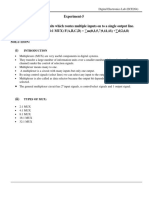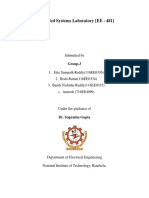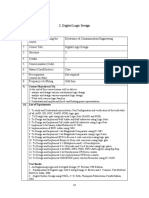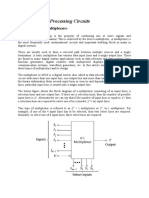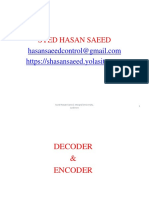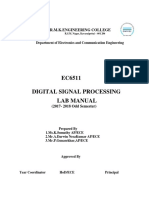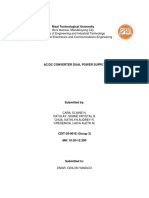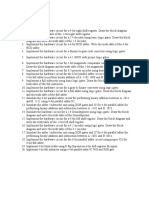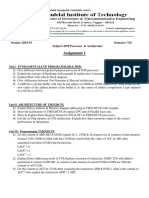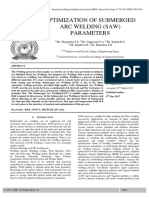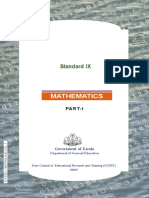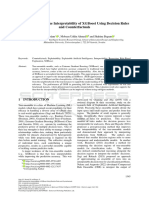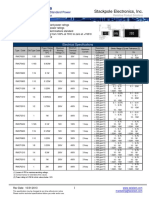Experiment No: 5
Title: Construction of Simple Decoder circuit using Logic Gates.
Objective:
1. To achieve the concept of a Decoder.
2. To compose and actualize the truth table
Theory:
A decoder is a combinational circuit that converts binary information from n input lines to a maximum of 2 n
unique output lines. If the n-bit is decoded information has unused (or don’t care) combinations the output
has been less than 2 n bit. The decoders are normally called n-to-m line decoders, where m ≤ 2 n. The purpose
is to generate 2n (or less) minterms of n input variables. Here 2 to 4-line decoder is considered where input
lines n=2 & hence o/p line is 2 n =4.
Circuit Diagram:
Fig.1 Circuit Diagram of 2*4 line Decoder
1
�Observation:
Truth table for 2x4 Decoder
Inputs Outputs
X Y D3 D2 D1 D0
0 0
0 1
1 0
1 1
2
�Title: Construction of Multiplexer Circuit Using Logic Gates
Objective:
1. To achieve the concept of a Multiplexer.
2. To construct and actualize the truth table.
Theory:
A Digital Multiplexer is a combinational circuit that selects binary information from one of many input lines
and detects it to a single output line. The selection of a particular input line is controlled by a set of selection
lines. Normally, there are 2 n input lines and `n' selection lines are there whose bit combinations determine
which input is selected. Here 1 selection line& hence 2 n = 2 i/p lines multiplexer is discussed .
Circuit Diagram:
Fig.1 Circuit Diagram of Multiplexer
Observation:
Truth table for 2x1 MUX:
Selection Lines Output
S0 Y
3
�Discussion:
Questionnaires:
1: Implement the following function using Multiplexer: F (A, B.C, D) = ∑ (0,2,3,8,12,14)
2: Construct a 16:1 MUX with 4:1 MUX.
3: Explain MUX can be used as “Data Selector”.
4: What is the purpose of a seven-segment decoder circuit? And why do we need a decoder
circuit to drive it?
5: How an encoder does differ from a decoder?
